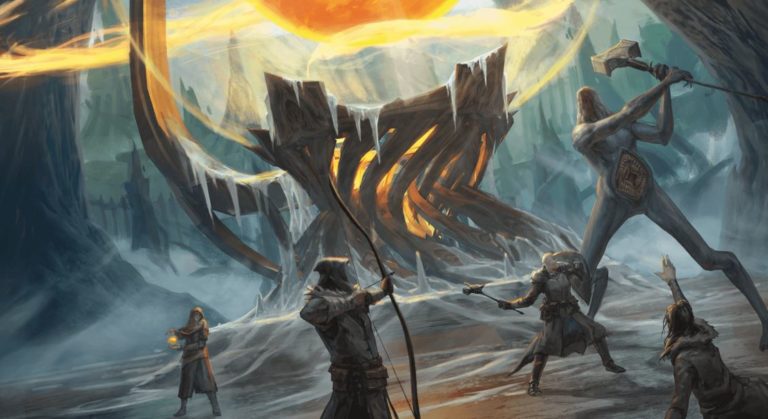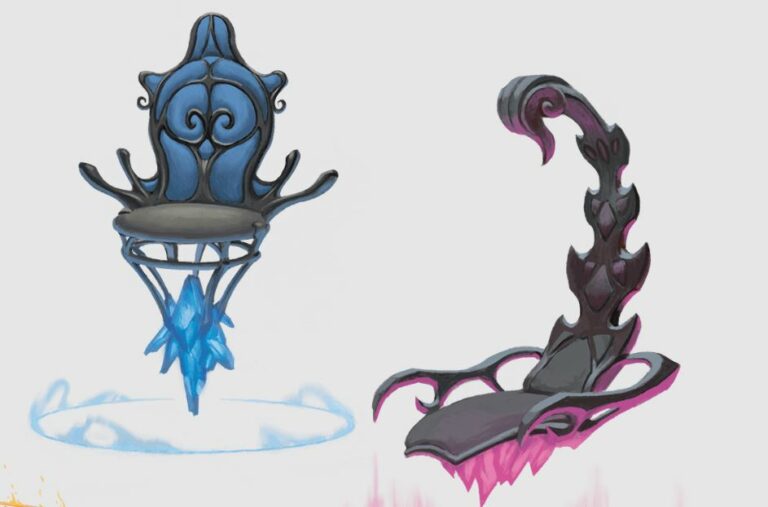Druidcraft 5E Guide | Attributes, Pros, Cons, and Uses
We have finally crafted a new spell breakdown for you! And this time, we will be going over the pros, cons, situational uses of Druidcraft. So let’s jump right into our Druidcraft 5E Guide!
Druidcraft 5E Guide
- School: Transmutation
- Level: Cantrip
- Casting Time: One Action
- Range: Thirty Feet
- Components: Verbal, Somatic
- Duration: Instantaneous
- Classes: Druid
When you cast this spell, you get one of the following four effects:

1) You predict the weather for the next twenty-four hours based off of a tiny sensory effect that lasts for one round. Samples of these effects include:
- Golden orb for clear skies
- A cloud of rain
- Falling snowflakes
- A heavy gust of wind
2) You instantly make a flower blossom, a seed pod open, or a leaf bud bloom.
3) Create an instant sensory effect within five feet that lasts for one round. Examples of these effects include:
- Falling leaves
- A puff of air
- Sound of a small animal
- Faint odor of a skunk
4) Light or Snuff out a campfire, candle, or torch.
Pros
Every small ability that you can create with Druidcraft will give your team a small leg up on whatever the Dungeon Master can toss at you. Want to properly prepare for the long road trip that you have ahead? Cast Druidcraft to give your team the weather forecast so you do not have to pack more than what you need. Looking to create a quick distraction for someone in the room? Cast Druidcraft to divert their attention somewhere else. Need to hide that fact that you are moving through the area? Cast Druidcraft to quickly put out that fire so your team does not get discovered.
Add on the fact that Druidcraft is a Cantrip that requires no materials to cast, and you have instantly become the parties swiss army knife. Cantrips do not require to be prepared to cast, thus, you can cast Druidcraft as many times as you want.
Cons
While we are on the subject of casting Druidcraft as many times as you want, you will need to keep in mind that Druidcraft requires you to use an action. That means that you cannot continuously cast Druidcraft. Druidcraft is also an instantaneous effect, which means that as soon as the effect happens, it ends. This spell is good for a small distraction here or there, but you might get caught if you were to keep casting the same spell over and over and over and over… See what I mean? Repetition is noticeable.
You also cannot use Druidcraft to deal damage. I am sure you can use it in combat, but that might require a roll to do whatever you are looking to do because your target will be focused on the combat. Most likely, your opponent will have to make a Concentration Check with an advantage in order for your Druidcraft to successfully distract the target. Rolling with advantage means that you make two rolls and use the highest result to resolve the ability. To make a Concentration Check, use the following formula:
1d20 + Concentration Ranks + Constitution Modifier
When Should You Use Druidcraft
Druidcraft is technically four different abilities wrapped into one, which means each ability will have a different time-stamp that is appropriate to use it. So I will go over each ability separately.
Weather prediction can be used every day, but that will become annoying in the long run. So I would recommend using Druidcraft right before you leave for an adventure and every day that you wake up while traveling. Knowing exactly what to expect will help your team properly prepare for the day and have one less unknown element ruin what you hope is a quick brisk through a park.
Making a plant grow can help with nourishment or stocking up on supplies to cast spells. Sure, the plant that you grow might not be the tastiest, but it will suffice when your team is either strapped for cash or running short of edibles. Helping yourself and your teammates grow supplies for spells will also cut down on potential monetary costs.
Creating a sensory effect is a good way to distract someone from what they are doing. If you know the character that you are trying to trick, you can simply cast the spell and create the effect that you are looking for. If you do not know them that well, you could take a perception check to see if there is a clue somewhere on the character that will give you an idea as to how to distract them. To make a perception check, use the following formula:
1d20 + Perception Ranks + Wisdom Modifier
Your Perception check could find a bowl of water that you could try to make some leave fall in, find some paper sitting on the desk that can be brisked away with a puff of air, find an animal companion that you can imitate is in pain or needs attention, or find a rotten piece of food that could emit a foul odor. Your imagination can go anywhere with this part of Druidcraft!
Instead of carrying flint and steel, you can use Druidcraft to light the campfire, torch, or candle that you know that your team is going to need. It will also help you snuff it out quickly for the moments that your team needs to remain hidden.
When Better Options Are Available
We already know that you cannot use Druidcraft in combat. In regards to finding something that is better than Druidcraft, I honestly cannot recommend anything better. While not on our Best Cantrips list, this is still a useful spell. Everything else is going to require you to spend a spell slot when you already have it readily available for free in Druidcraft. I would simply stick with Druidcraft for all of your tricky needs.
That concludes our Druidcraft 5E guide. Need more spellcraft in your life? Check out our Blade Ward 5E guide here at Nerds and Scoundrels!






